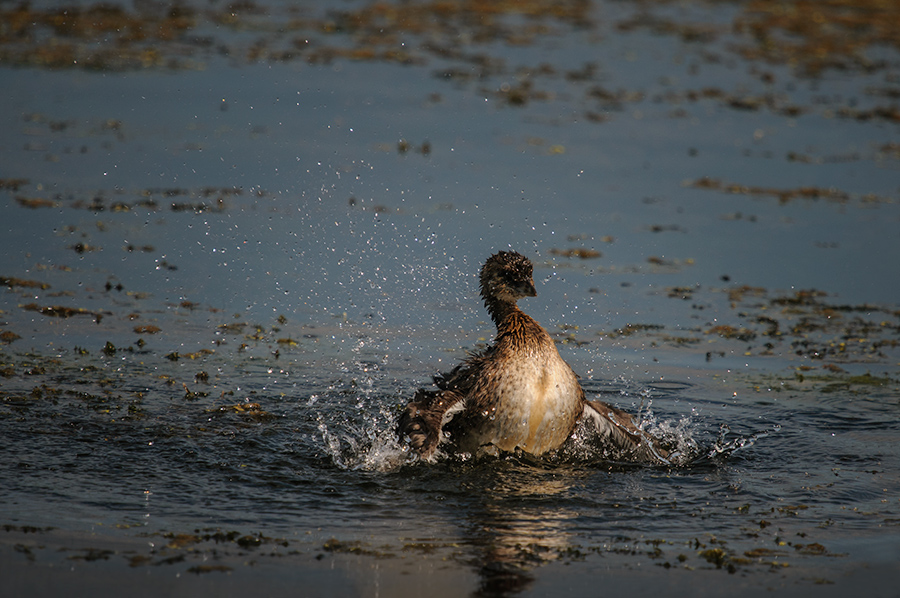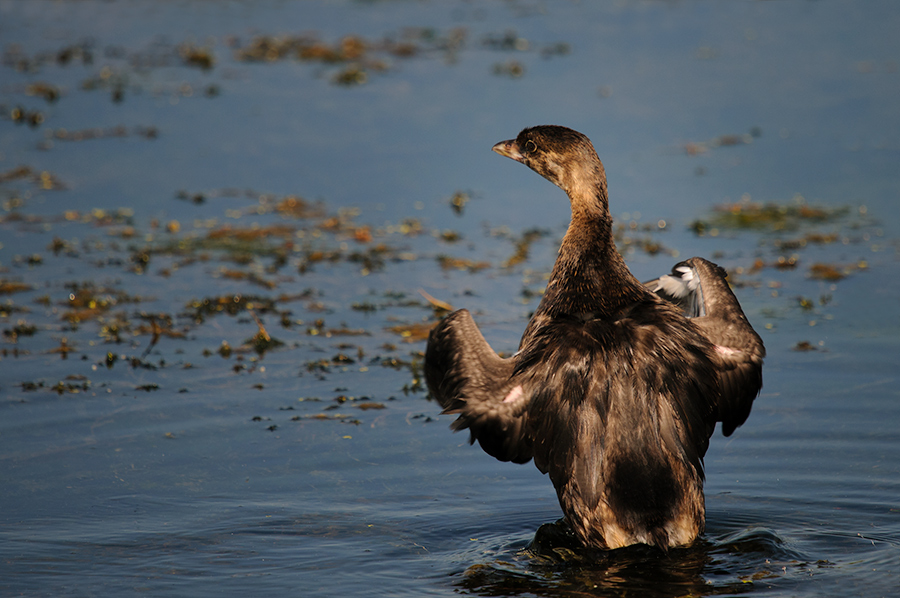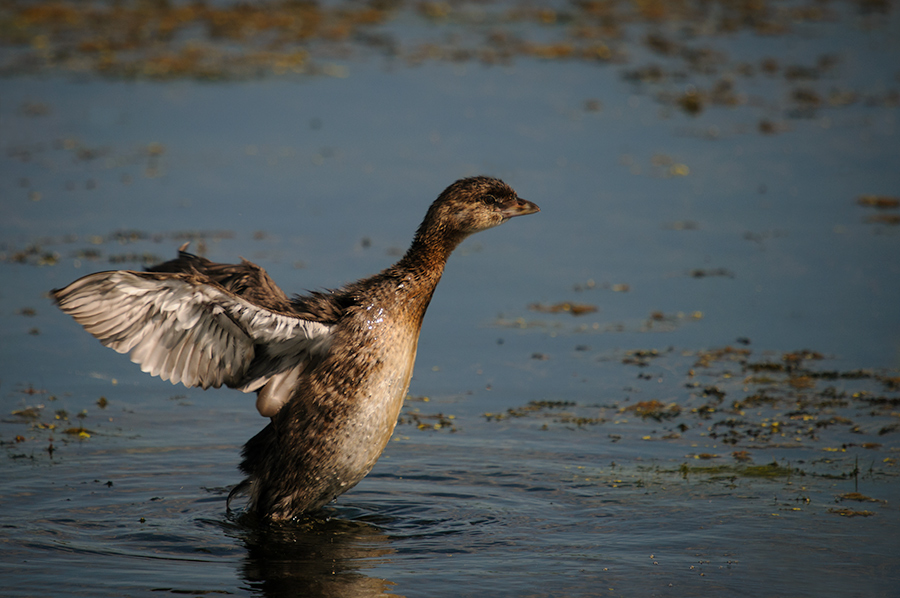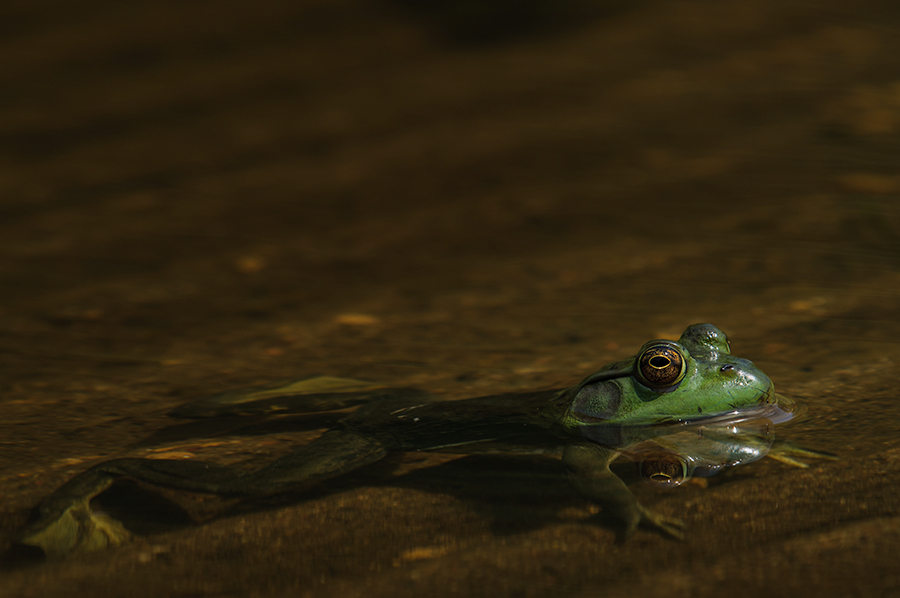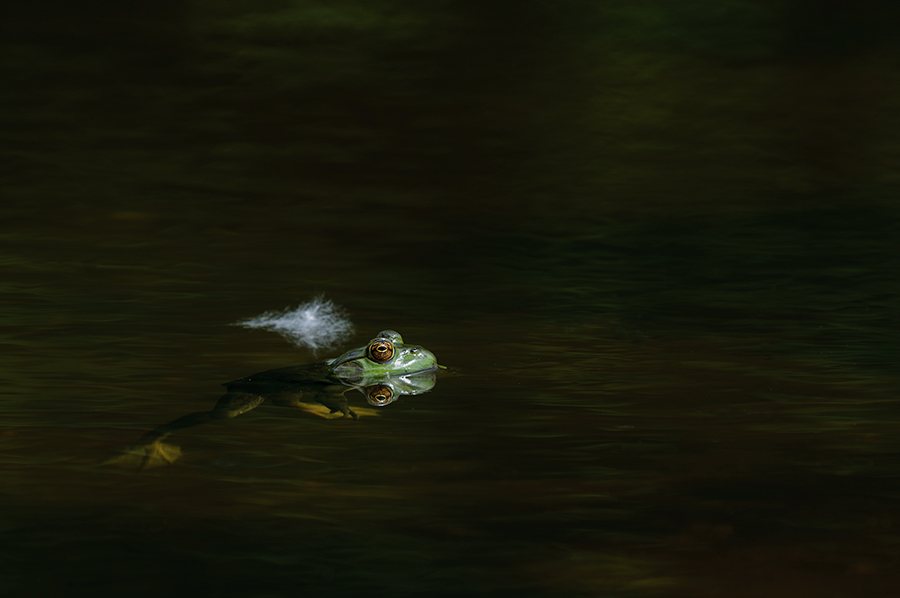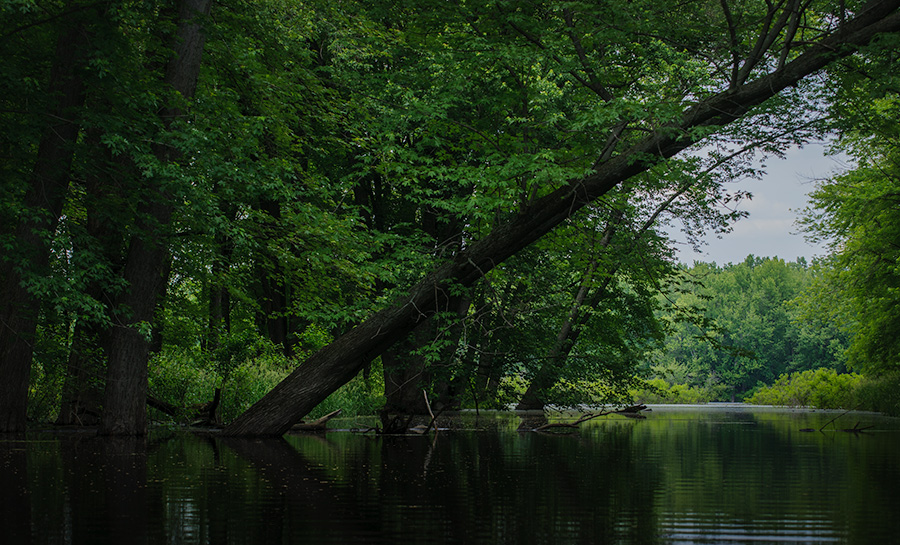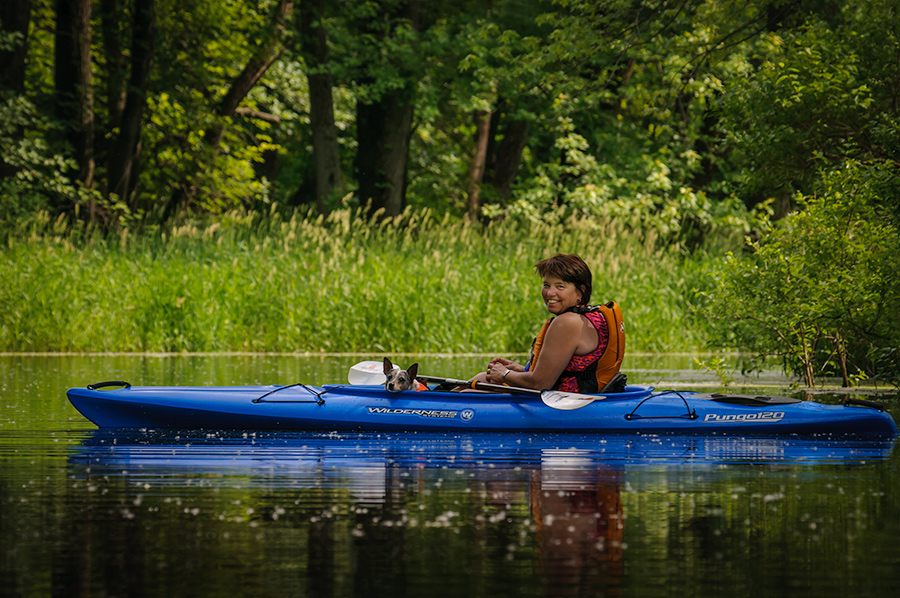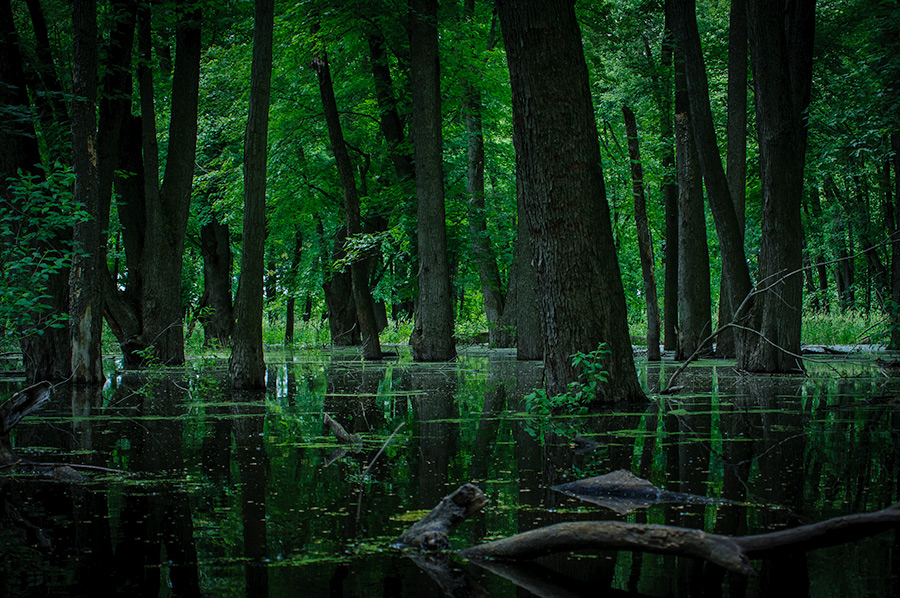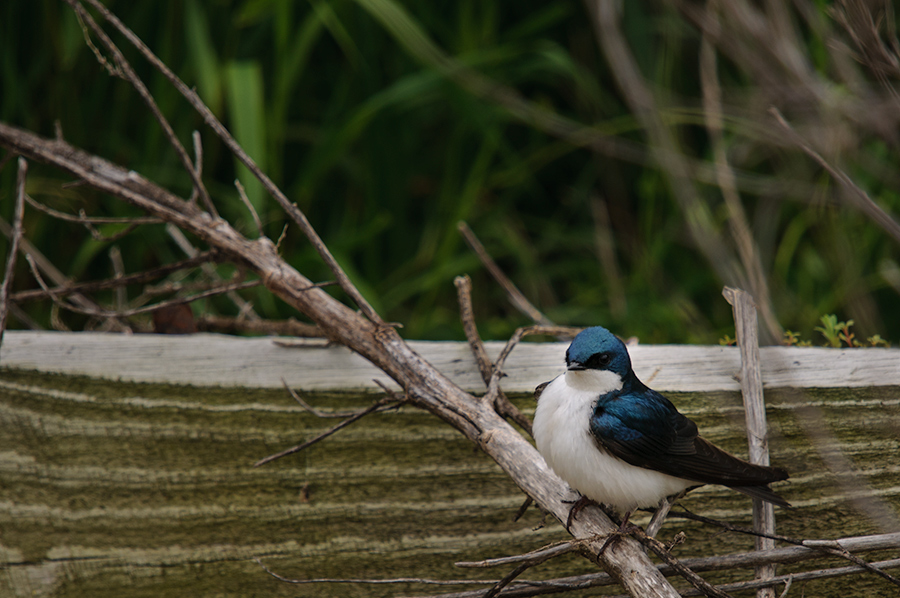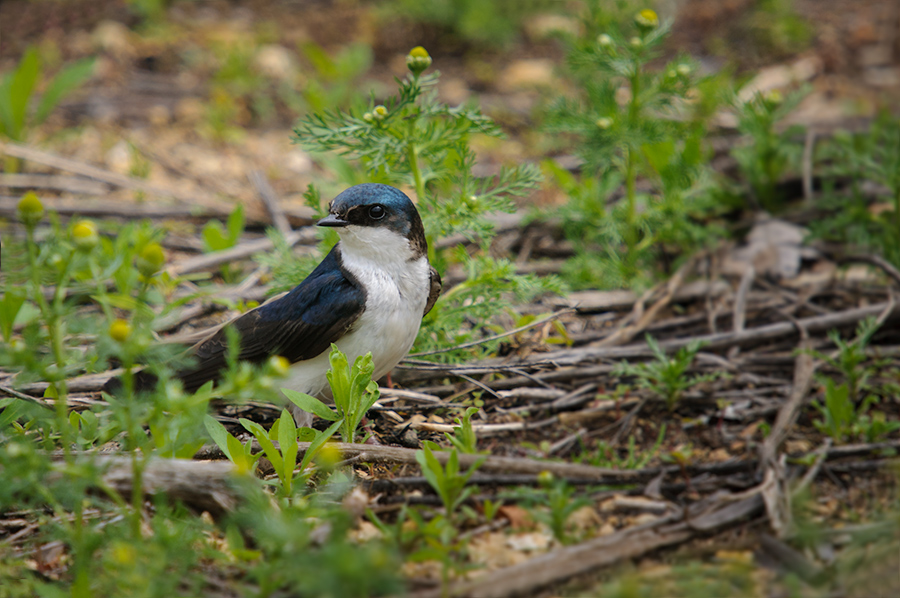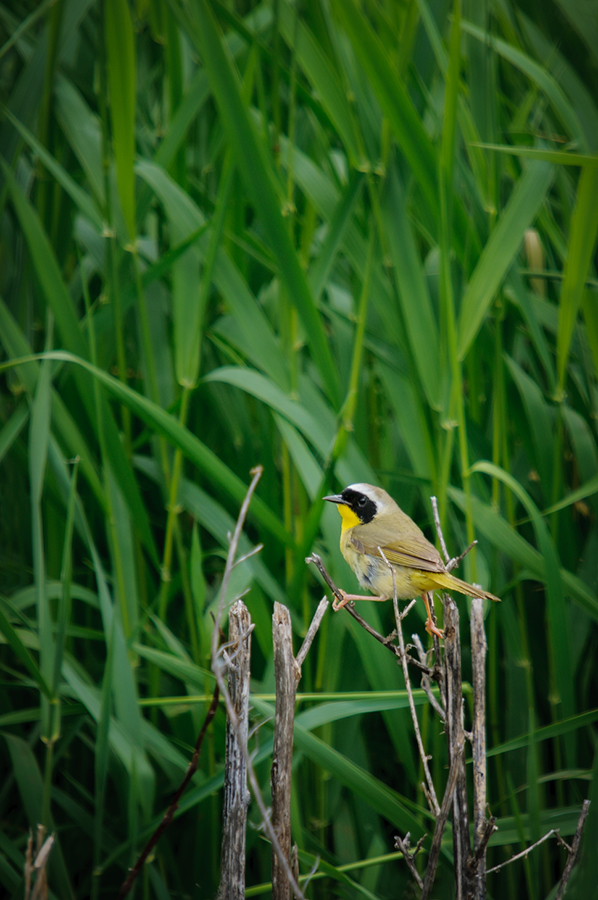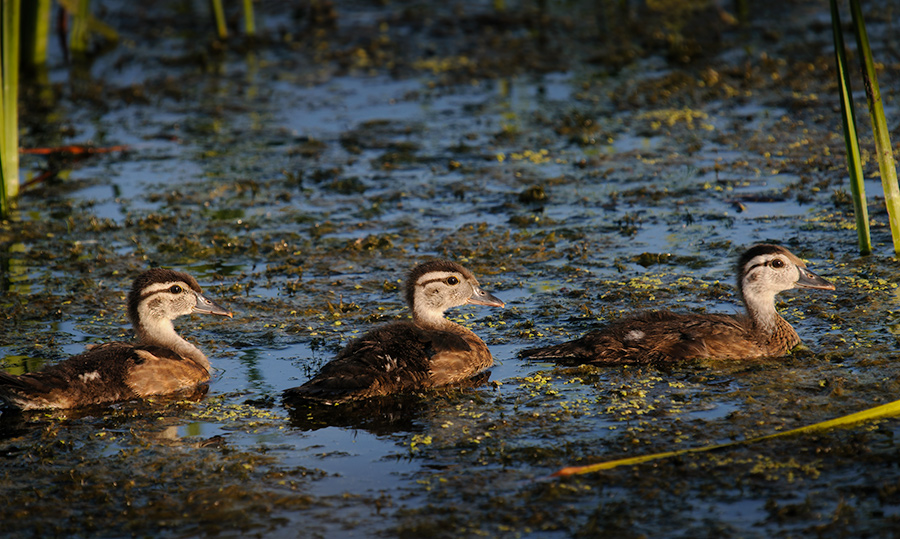
If there is anything special about the first image it is just the fact that I was able to make it and as a bonus, making it with killer light. Wood Ducks are extremely shy and it is very difficult to get close to them. It was already 7PM last Saturday when I saw these three juveniles down below the levy in the water. There was obviously no mother nearby and they just stayed and tried to camouflage with the mud and algae carpet on the water surface. As good the algae and water plants might be for the ducks, they kill an image like this. Background is key for a good wildlife photo and this one looks just yucky, despite the great light on the young ducks.
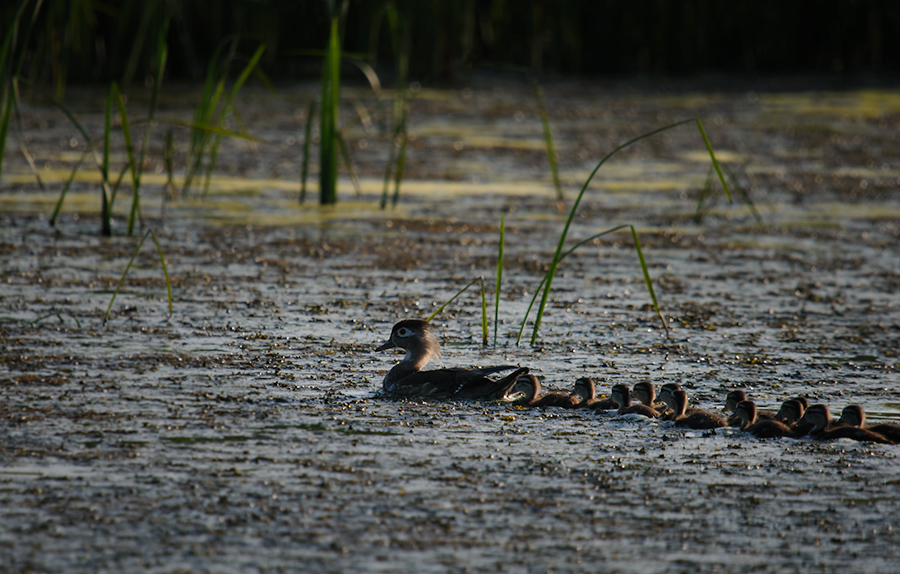
I was wondering if I saw the second brood already when I watched only a few minutes later this female Wood Duck with twelve tiny ducklings swimming across another pond in the wetlands. Water fowl lives a dangerous life and many predators, from hunting birds to foxes and big fish that try to catch a young bird from down below, can have an impact of how many birds will make it into an adult life. Finally the hunting season in the fall is not helpful for some of the bird species that are in a decline anyway. It makes me sometimes sad to see that only two or three ducklings survive but I know it is part of understanding nature in its whole complexity.
Earlier in the spring this year I saw very few Wood Ducks in the Green Island Wetlands and wondered if this was the result of the dry summer with low water levels in 2012. I guess they were just hiding better than other years... ;-) I'm very happy now to see all the "Kindergarten" activities in the lakes and ponds along the Mississippi River.

